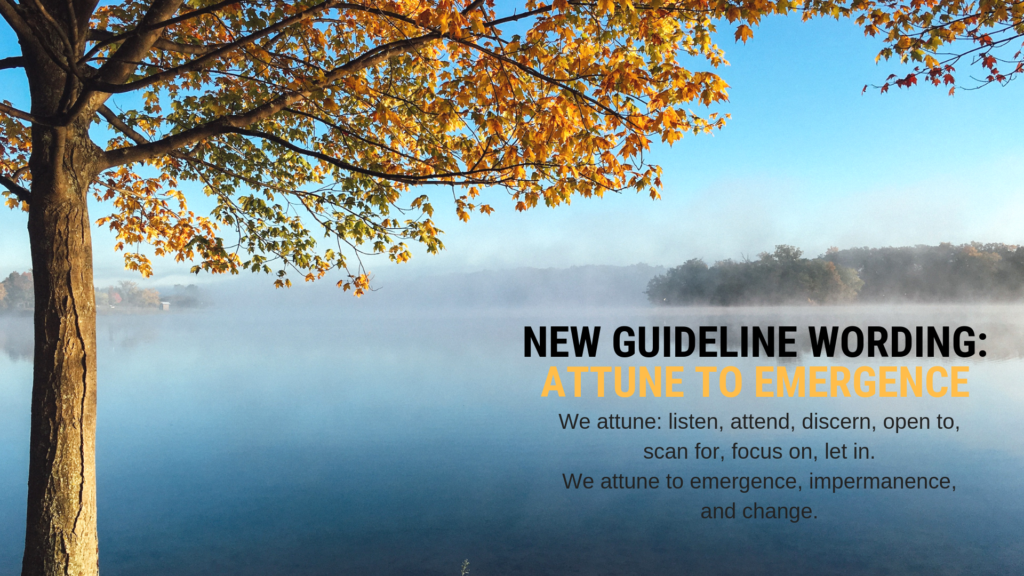
After nearly two decades offering the Insight Dialogue guideline Trust Emergence, I decided in May 2018 to change the name of this guideline to Attune to Emergence. I had long been concerned by how often practitioners misunderstood my use of the word “trust.” For example, they assumed that “trust” referred to trusting their meditation partner, trusting the safety of Insight Dialogue, or trusting the Dhamma. Some thought “trust will emerge” among the group members, or that the practice will see the emergence of trust in life, or that the instruction is to trust that whatever emerges will be good (trustworthy). These misunderstandings persisted despite my repeated attempts to offer clear instructions about Trust Emergence as a pointing of the mind towards impermanence, a not knowing what’s coming next, and a releasing of control.
Interestingly, the emergence in my own life of a continual reflection on the nearness of death finally motivated me to change the guideline language. The intention of the guideline is the same, only the name is different. While I had been mulling for years over changing the wording, I realized that thousands of people by now have learned the practice as Trust Emergence, and the teachers and facilitators all know it as Trust Emergence. There is even Trust Emergence written on some drinking mugs and artwork. I hope, however, that the new wording will both improve the efficacy of the guideline and prevent at least some of the previous misunderstandings. (Although I recognize that this is out of my control, I can still do what I can while alive.)
Let’s look at what this new wording offers to the practice you already know and can feel in your body. Emergence is the process by which the complex things we experience arise and pass away due to underlying contributing factors outside of our control. In this sense, emergence refers to the rising edge of experience. This is one way of experiencing the present moment — through the lens of the key Buddhist teaching of anicca, impermanence. Properly speaking, anicca points not only to the arising of phenomena but also to their vanishing. Indeed, when I am teaching, I often call this out directly, inviting meditators to attune to the arising and to the vanishing. The ultimate teaching on mindfulness of impermanence is attuning to both the arising and the vanishing; this is what I often refer to as “dwelling at the tip of the moment”.
Attune refers to attending to and being present with this instability. Attuning is a way to listen, adjusting the attention to discern particular features or events. In this case, one attunes one’s listening to focus on the instability of all that is seen, heard, sensed, and cognized. One can more precisely attune to the arising, to the vanishing, or to the tip of the moment. One can also attune to the other aspects suggested by this guideline, such as attuning to the world, including one’s body-mind, as not being under one’s control. Or attuning to the feeling of the vibrancy of the senses, especially the body. Or attuning to the “don’t know mind” that frees us from assumptions and predictions. In short, we attune to the flux, the rising and vanishing of experience, as the object of attention.
Putting these two terms together, Attune to Emergence gives a clear, but I hope, poetically open sense of how meditation can be supported with this guideline. Attune replaces Trust as the active verb. This is what we do; we attune: listen, attend, discern, open to, scan for, focus on, let in. We attune to emergence, impermanence, and change.
